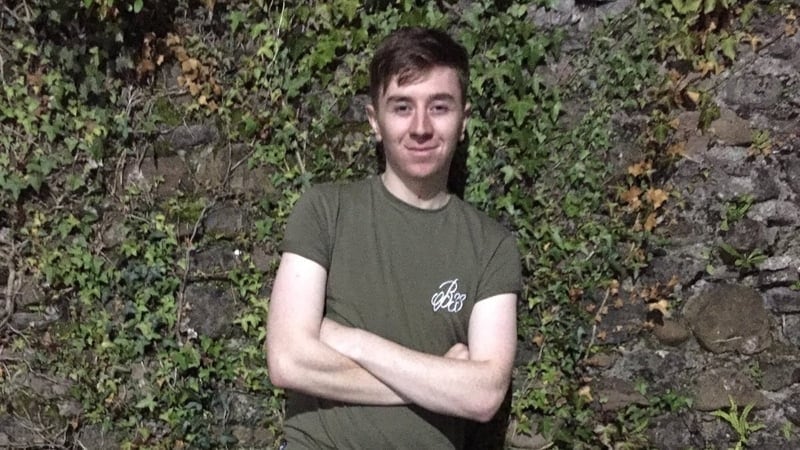The more information that emerges, the more opaque the picture seems to become.
Last night, three days after it emerged that a High Court judge had alleged he had been improperly approached by a Circuit Court colleague about a family law case, the Courts Service released the judgment containing these serious claims.
As with the statement issued by two senior members of the judiciary after their brief investigation into the allegations last Monday, the judgment raises as many questions as it answers.
Dated July 12th this year, Mr Justice Henry Abbott’s ruling makes reference to an “entirely improper interference” involving a political representative and a judge in a long-running and acrimonious case.
The case centred on a dispute between parents over custody of their youngest child. It was a highly acrimonious and extraordinarily drawn-out saga that involved dozens of court appearances over more than a decade.
Mr Justice Abbott’s version of events is as follows.
On July 21st, 2010, he delivered a ruling in which he ordered that primary care of the boy – then aged nine – was to be transferred to his father.
A few days later, he encountered Circuit Court judge Desmond Hogan in the yard of the Four Courts. In the course of a casual conversation, Judge Hogan asked was it true that he had made a particular order in the case.
Mr Justice Abbott took exception to the question and reacted by saying the reasons for the decision would be set out in a written judgment in due course. This 60,000-word judgment was delivered a year later, in July 2011.
Judge Hogan, according to his account as related in a statement by the two investigating judges, says that at this remove he is unable to recall the conversation or how he came by the information that a particular ruling had been made in the case.
He does not dispute that he may have asked Mr Justice Abbott “in a casual way” about the case, but he is “satisfied” that he had no request to raise it from any politician or from anyone connected with the case.
“There had been absolutely no intention of interfering with the case of influencing its outcome in any way and he deeply regrets that his query may have given rise to any such apprehension,” Mr Justice Nicholas Kearns, president of the High Court, and the president of the Circuit Court, Mr Justice Raymond Groarke, say.
These general versions of events are not irreconcilable, but they are vague, and they raise serious questions that are merely underlined by the judgment released last night.
First, why did Mr Justice Abbott react so strongly when Judge Hogan approached him? Judges regularly discuss cases – it would be ridiculous to expect them not to.
In an area such as family law, where so little information circulates and judges often do not have the benefit of knowing how their colleagues deal with certain situations, it is arguably a good thing for them to talk to one another.
That day, however, in the yard of the Four Courts, Mr Justice Abbott “took exception” to his fellow judge’s approach, which he later called “entirely improper”. What precisely was said between them to provoke such a reaction?
Second, how did Judge Hogan know about the ruling? Family law proceedings take place in private and cannot be attended by journalists or members of the public.
Perhaps, had the case raised a significant point of law, word might have seeped out in the Four Courts, but this wasn’t the case. The proceedings were acrimonious and no doubt terribly traumatic for all involved, but sadly, it appears, not entirely unusual.
Third, why did Judge Hogan raise the case with his colleague?
The court presidents are satisfied the exchange did not influence rulings in the case; what they haven’t said is whether they think Judge Hogan was trying to influence.
Fourth – and this is the most difficult one of all to decipher – what role (if any) did a TD have in the affair?
In his judgment last July, Mr Justice Abbott sets out how he asked the mother in the case if she had contacted a member of Dáil Éireann after he had made the order to give custody of the boy to the father.
Here’s the key line: “I asked her if, after the making of the High Court order herein but before the furnishing of reasons, she asked a Dáil deputy to make inquiries for her in relation to the matter from the judge, and that that Dáil deputy sought the services of a Circuit Court judge to ask me was it a fact that Edward had been sent away to the primary care of the father.”
(The child’s name has been changed.)
He goes on: “She agreed that she had made that approach to the Dáil deputy and apologised on the basis that it was at a time when she was unrepresented.”
Mr Justice Abbott does not name the elected representative. Former Fianna Fáil TD Mary O'Rourke has told The Irish Times she was contacted by the mother in the case but categorically denies making an approach to any judge about the matter.
The mother, according to Mr Justice Abbott, confirmed to him that she had approached a TD about the case.
Where did Mr Justice Abbott form the view that Judge Hogan had been prompted to raise the case by someone else?
For believe it he clearly does, referring at one point to “the entirely improper interference of mother via political representative and judge”.
That judgment closed one dispute. It may well have stirred up a new one.












